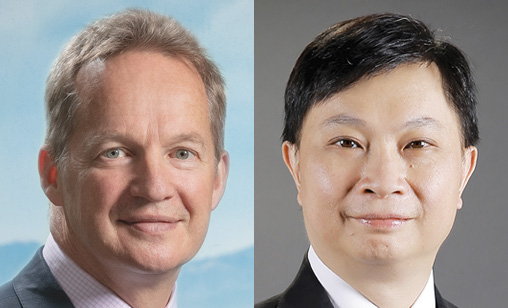Main Story
Only way was out for Cathay Pacific CEO
September 1st 2019
When the news broke on August 16 that Cathay Pacific CEO, Rupert Hogg, had resigned along with chief customer and commercial officer, Paul Loo, it was clear the airline group was in damage control mode. Read More » Hogg and Loo were popular bosses, but weeks of protests at the airline group’s home hub of China’s Special Administrative Region of Hong Kong and Mainland Chinese government demands for punishing aviation employees supporting anti-government demonstrations changed the operating landscape for Cathay and majority shareholder, property to aviation conglomerate, Swire Pacific.
Ten days earlier, at the announcement of the airline group’s interim turnaround profit of HK$1,347 million (US$173.13 million), Cathay Pacific chairman, John Slosar, who will step down on November 6, said in reply to questions from the media, that what staff did outside working hours was their own business.
 |
A few days later Beijing announced airline staff taking part in anti-government demonstrations in Hong Kong would be barred from crewing on flights to or over China. The Chinese regulator, the Civil Aviation Administration of China (CAAC), demanded the airline group take punitive action against staff favouring the protests.
The regulator ordered Cathay to submit information, for verification and authorization, of all crew members flying to the Mainland and required the management to deliver a plan to Beijing by August 15 that boosted Cathay Pacific and Cathay Dragon internal controls, flight safety and security. A CAAC statement said Cathay’s actions, or lack thereof “have led to a severe threat to aviation safety, created negative social impact and increased the risk of flying from Hong Kong to the Mainland”.
In the days leading to his resignation, Hogg wrote to staff and said the airline had “zero tolerance” for employees joining “illegal protests” and that disciplinary consequences would apply that may include termination of employment. The airline had to comply with the civil aviation authority’s regulations, he wrote.
“Though people may share different views, it is essential we all respect each other, our customers and members of the public. We are aware this has been, and continues to be, a very challenging time for many of us who live in Hong Kong and call this incredible city home,” he said.
Separately, a statement from Cathay Pacific parent, Swire Pacific, said: “Hong Kong is our home. We have consistently and resolutely supported Hong Kong’s development and remain fully committed to Hong Kong today. We share the vision of the Chinese Central Government for a vibrant Hong Kong within an integrated Greater Bay Area which will bring future prosperity and opportunity to the people and businesses of Hong Kong.
“We are supporting this vision with our own investment plans which remain ambitious across a wide range of industries in Hong Kong and more broadly across China. Swire Pacific is deeply concerned by the ongoing violence and disruption impacting Hong Kong,” the statement said in part.
On August 8, the airline group reported its first profit for the January-June period since 2016 as it moved into year three of its transformation program. At the results announcement, it forecast higher earnings for the seasonally better second half. That prediction has turned to dust with early forward passenger numbers for the rest of the year down 35% compared with the same months a year ago.
Mainland flag carrier, Air China, owns 29.99% of Cathay. Other major shareholders are Swire Pacific (45%) and Qatar Airways (9.99%). In turn, Cathay holds 20% of Air China. The airline group does not disclose specific details of its mainland China business, but flights originating from the Mainland and Hong Kong are believed to account for significant revenue.
China is such an important market for Cathay and Cathay Dragon that analysts agreed the company had no choice but to accept the CAAC directive.